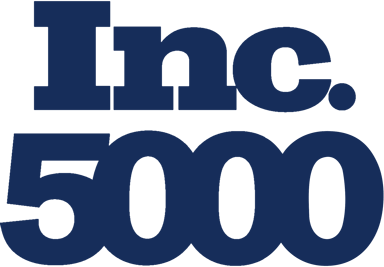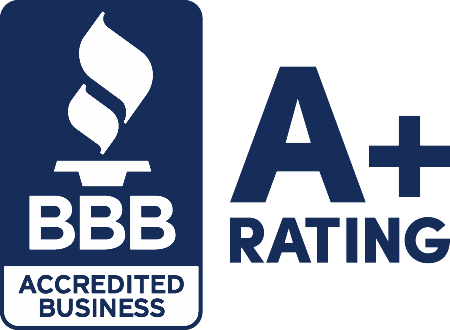What is an SBA Business Plan?
A business plan is a document that outlines a company’s concept, structure, strategy, goals, target market, and financial projections. It defines the mission statement and business model for prospective investors, financiers, and buyers to understand the company’s value.
An SBA business plan refers to a plan required for SBA loan approval. The SBA provides guidance on the specific formatting for SBA business plans, which generally follow best practices.
There are three types of plans:
- Startup: The plan for a new company about to launch or that just launched.
- Operational: Usually, a year-over-year plan for established businesses that outlines a company’s goals and growth projections.
- Scenario-based: An agile plan for companies in rapidly changing industries that may need to pivot their focus as they scale up.
Why are SBA Business Plans important?
Not every SBA loan request requires a plan, but many do – especially when asking for higher borrowing amounts. Even if your specific loan request doesn’t need it, including one can still help your approval odds.
Startups and newer businesses often need a plan because they don’t have financial data. A well-thought-out plan can show projected financial performance and cash flow.
Established businesses often have a plan from when they launched, augmented with an operational plan. An operational plan can help bolster an established company’s SBA loan application.
Think of it like your financial statements show where your company has been and how it got there, while your operational plan shows how it will build on that history for a successful future. The two sources can create a powerful narrative as to why your company should be entrusted with a business loan.
Defining a business plan can help you identify and prioritize the company’s essential financial needs. In doing so, you can also identify the SBA business loan package that will best help you meet those needs.
How do I craft an SBA Business Plan?
There are several important categories to include when writing a plan for an SBA loan. The following aspects are primarily based on a startup plan, but you can also apply them to an operational or scenario-based plan. Some small businesses use business plan software.
Executive Summary
The executive summary provides a high-level overview of your company. This introductory section should include what your company is and why it will be successful. You should include your main competitive advantage, USP, and the mission or vision statement.
The summary should also preview the upcoming sections by presenting the key information. You should briefly summarize your leadership team, sales and marketing goals, and financial projections.
Company Description
In this section, you’ll drill down into what makes your company unique. You’ll want to expand your competitive advantages and the “secret sauce” to your success. Advantages could include having an expert on the leadership team, being in an ideal location, or bringing patented technology or IP to market.
The description should include what problems your company seeks to solve. List any target segments your company intends to serve, such as consumer segments, other businesses, or organizations.
Market Analysis
In this section, you’ll use market and competitor research to demonstrate your knowledge of the industry and your target segment. It would be best if you expanded on how your competitors operate and what they do successfully. You’ll then showcase how you can improve or do things differently to compete in the market.
Organization and Management
The organization and management section describes your company’s legal and organizational structure. You’ll identify if the company will incorporate as a general or limited partnership, LLC, S-Corp, or C-Corp. You should also identify the owners.
You’ll include the organizational chart in this section as well. The org chart lays out who’s in charge of the company, typically with an executive leadership team and possibly a management team. Consider including the resumé or CV for each member of your leadership team.
Service or Product Line
You’ll use this section to identify what products or services you intend to sell. You should identify the market need for the products/services and how they will benefit your customers.
The products or services described should include any plans for IP copyrights or filing patents. Include any research and development plans as well.
Marketing and Sales
Your marketing and sales plans should outline your strategy to attract and retain customers and how you will process sales. There are many marketing and sales strategies across various industries, and your plan might evolve as your company grows.
Marketing plans should include your branding strategy, your marketing channels (print, TV, social media, banner ads, SEO, etc.), and your target customers. Your sales strategy should include how you intend to collect and process payment.
For example, will you invoice customers or sell on credit? What point-of-sale system and payment methods will you accept if opening a store or physical location? If you’re selling online, how will your eCommerce platform operate?
Funding Request
You’ll only include this section if you are requesting funding for your business operation. The request should identify how much you need, how long the funds will last, and how you’ll use the money.
One of the critical decisions is if you’re looking for equity financing or a business loan. In equity financing, you sell a portion of your company’s ownership for funding. In addition to selling shares in your company, equity financing might include a seat or seats on your board of directors.
With a business loan, on the other hand, you don’t give up any ownership in the company, but you do incur debt. The funding request is most likely for a business loan if you’re preparing the plan for the SBA. In loan requests, you should also identify your requested terms.
Financial Projections
This section aims to show that your company is viable and stable. The goal is to convince the reader that your company is or will be a success.
Established businesses should include income statements, balance sheets, and cash flow statements for the previous three to five years. List any collateral you could offer for a business loan.
Startups and established businesses should provide a prospective financial outlook for the next five years. New businesses should include quarterly projections for their first year in business. Future financial plans include projected income statements, cash flow statements, and balance sheets.
Appendix
The appendix includes any additional relevant information. You can use this section to list any requested information as well.
Examples of supporting documents:
- Credit histories.
- Resumes or CVs.
- Product pictures.
- Reference letters.
- Business licenses and permits.
- Patents, contracts, or other legal documents.
How to apply for an SBA Loan:
United Capital Source can help you apply to an SBA-approved lender following these steps.
Step 1: Ensure You Qualify
You’ll need a credit score between 650-700 and a healthy, consistent cash flow. How you intend to use the money plays a significant role as well.
Step 2: Gather Your Documents
Be prepared to provide:
- Driver’s License.
- Business license or certificate.
- Voided Business Check.
- Bank Statements.
- Credit Reports.
- Business Tax Returns.
- Credit Card Processing Statements.
- 3 Years of personal and business tax returns
- Personal Financial Statement.
- List of Real Estate Owned.
- Debt Schedule/Loan/Rent/Lease Documentation
- Deeds/Title/Ownership documentation for any collateral/Security
- Current Profit & Loss Statements and Balance Sheet Year-to-Date
- A/R and A/P Reports
- Business Plan.
- United Capital Source 1 Page Application
Step 3: Fill Out the Application
You can begin the application process by calling us or filling out our one-page online application. Either way, you’ll be asked to enter the information from the previous section along with your desired funding amount.
Step 4: Speak to a Representative
Once you apply, a representative will reach out to you to explain the repayment structure, rates, and terms of your available options. This way, you won’t have to worry about any surprises or hidden fees during repayment.
Step 5: Receive Approval
SBA Loans through our network generally take 3-5 weeks to process. Once approved and your file is closed, funds should appear in your bank account in a few business days.
Frequently Asked Questions
Here are the most common questions about writing a business plan for an SBA loan request.
Does the SBA require a Business Plan?
The answer to this question comes down to the specific loan you’re requesting and the SBA lender you’re working with. Sometimes, the SBA might require a plan, and sometimes the lender might need it. It can help bolster your loan application even when it is not required.
Does the SBA help write a Business Plan?
The SBA provides some resources and tools to help you write a plan. Visit the SBA website for resources like the SBA business plan template.
If you need additional help, small business development centers are available to help you write a plan.
What is a Lean Business Plan?
A lean business plan is a shortened and streamlined version of a standard plan. It does not go as in-depth and only provides key elements of the plan. Lean business plan sections include:
- Key partnerships.
- Key activities.
- Key resources.
- Value proposition.
- Customer relationships.
- Customer segments.
- Channels.
- Cost structure.
- Revenue streams.
Should I write a Traditional or Lean Business Plan?
If you’re applying for a loan, you should include a traditional business plan. The SBA and SBA lenders prefer companies with an in-depth plan for success.
Lean business plans are usually for startups, whereas traditional business plans are for any company. You might only need a lean plan if you’re applying for an SBA microloan, specifically for startups.
Traditional Business Plan Pros & Cons
Pros:
- In-depth analysis of the company & projected success.
- Sets specific goals and milestones to measure success.
- Keeps leadership, operational, marketing & sales teams aligned.
- It’s the standard plan requested for business loan applications.
Cons:
- More time-consuming & challenging to write.
- Might be difficult to accurately project financials.
Lean Business Plan Pros & Cons:
Pros:
- Typically, only one page & only takes an hour to make.
- Summarizes only the most critical information.
- Ideal for startups, agile businesses, & companies in volatile industries.
Cons:
- Does not provide in-depth information about the company.
- Does not provide a detailed plan to achieve goals.
- Lenders & investors may request more information.
Can my Business Plan change over time?
Yes, it is common for a plan to change or evolve. Industries, trends, and your competitive market almost always change, and so should your business plan.
It’s recommended to update your business plan once a year or any time you make major changes, such as upgrading or adding products/services, changes in ownership or executive leadership, changing locations, or pivoting into a new market segment or industry.
SBA Business Plan – Final Thoughts
Wise small business owners plan. A business plan helps clarify your company’s mission, products or services, financial goals, and more. A solid plan helps get everyone in the organization on the same page and working towards the same goals.
A plan is also essential when courting financing for your company, whether you’re looking for investors, buyers, or a business loan. Luckily, the SBA outlines its preferred plan format, which we discussed in depth. Preparing your business plan according to the SBA’s format is one of the vital steps in preparing an SBA loan application.
Contact us if you need more guidance on business plan formatting or if you’re ready to apply for a small business loan.




















